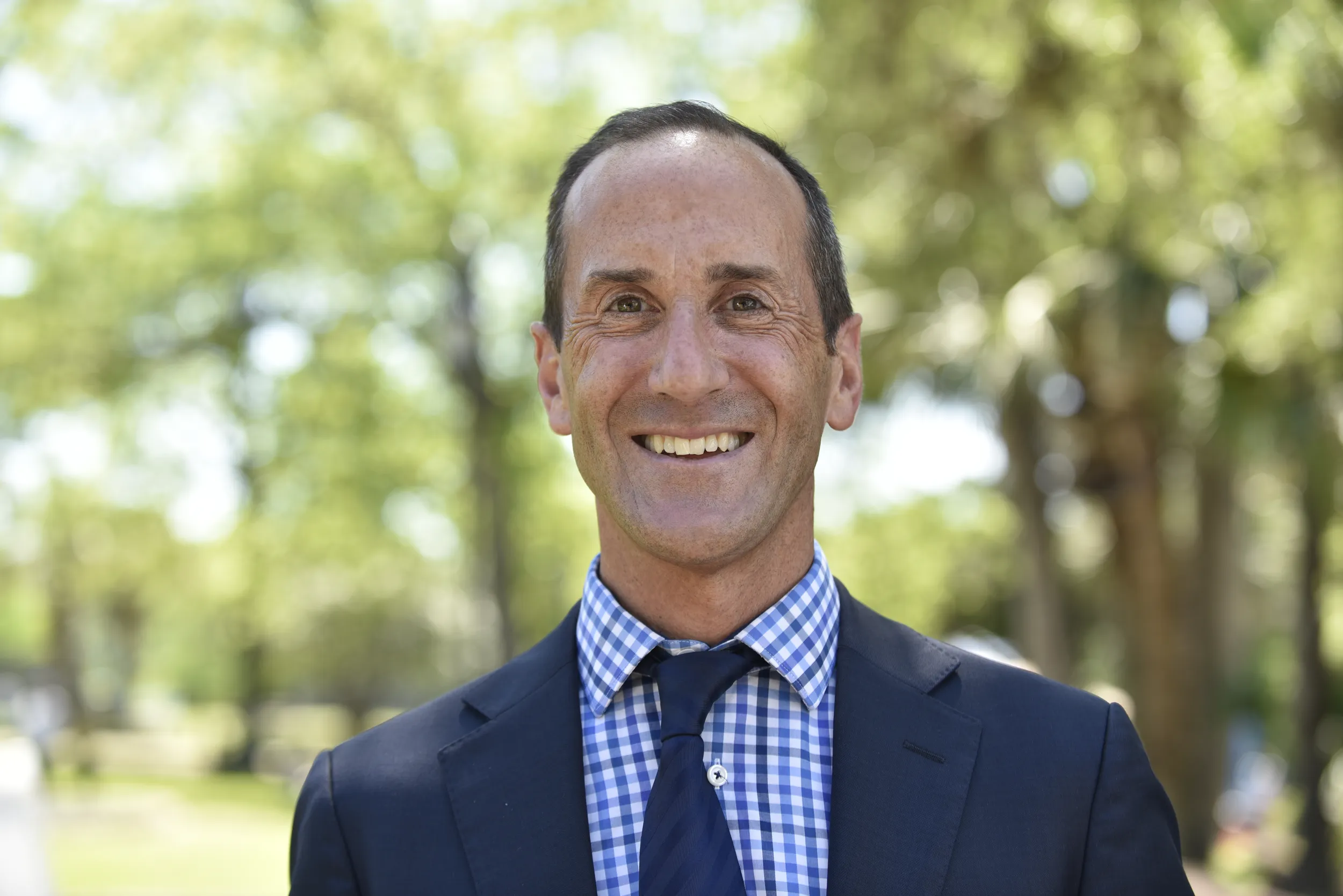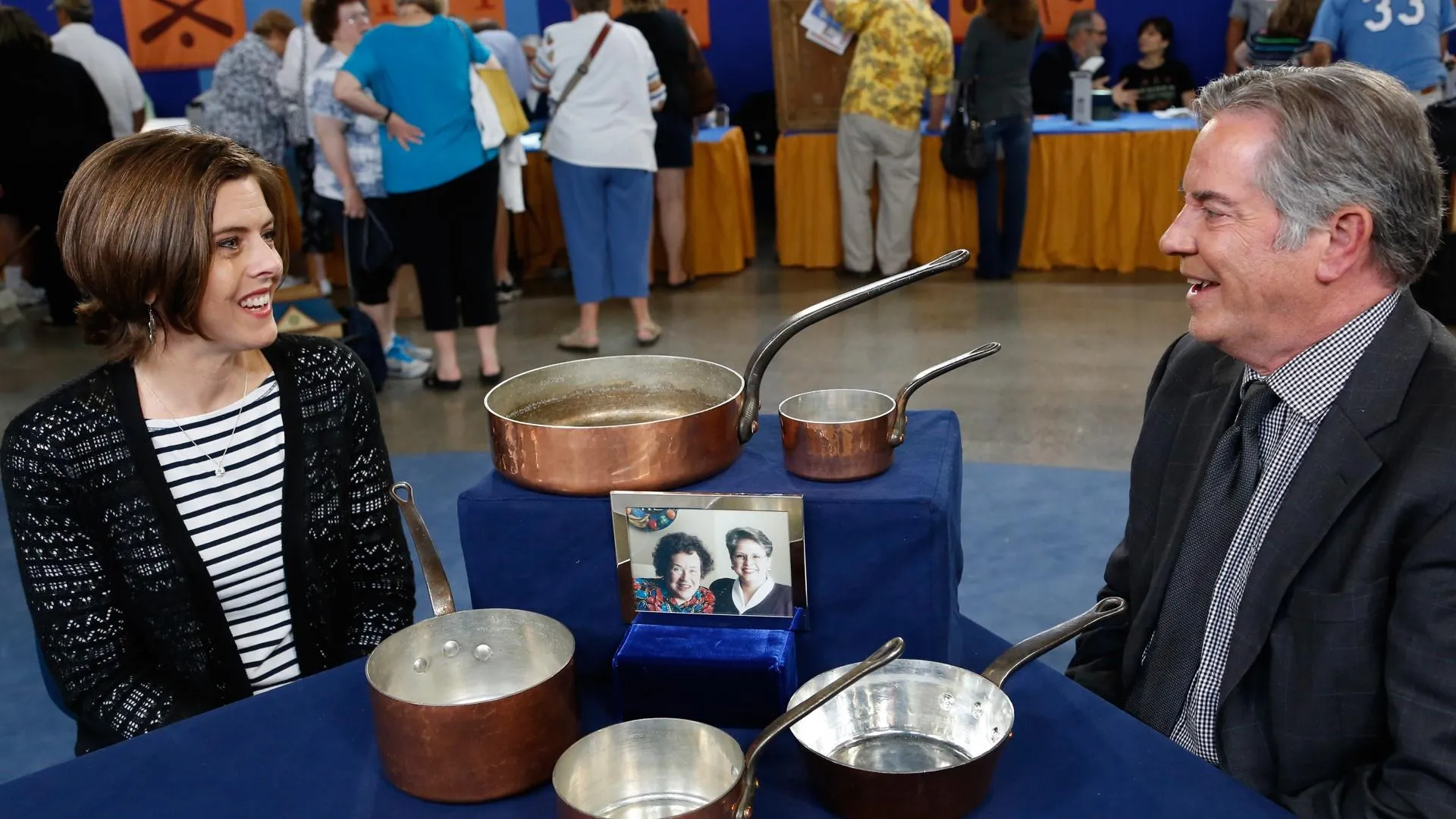APPRAISER: We've certainly seen Thomas Hart Bentons on ANTIQUES ROADSHOW before, but none quite resonate with so much local importance perhaps as what you brought in today. Can you tell me a little bit about what you have?
GUEST: This is a lithograph of a painting that he did dealing with the terrible flood we had in 1951 here in Kansas City in Kaw Valley. And he mailed them to the members of Congress, asked them to appropriate money to help these poor victims of this flood. And apparently, a lot of these folks didn't know who he was and they ended up in the waste basket. But Richard Bolling, who was our Congressman at the time, fished a bunch of them out of the wastebasket, brought them back to Kansas City, and they auctioned them off at Phillips Hotel to raise money for the flood victims. And my dad got a hold of one of them. He was also a friend of Tom Benton's, so Tom signed this to my mom and dad, Gene and Monica. And this is a copy of the letter he sent to Congress.
APPRAISER: This was the worst flood to ever hit this area. It was in 1951, where the flood waters of the Kaw River or the Kansas River met the Missouri River and caused, in 1951 dollars, a billion dollars worth of damage. And 28 lives were lost. And hundreds, if not thousands, of homes and businesses in the Kaw Valley were decimated, ruined.
GUEST: That's true.
APPRAISER: And Benton, at the time, he was summering as he normally did on Martha's Vineyard. When he came back from his summer and saw that still nothing had been done, he's apoplectic. And he creates this painting. And from that painting, they made lithographs, as you said, and he sent a lithograph to each member of Congress, along with this very heartfelt letter. He said, "'The foxes,' you will remember "from your Sunday school days, 'have holes, "'and the birds of the air have nests; but the son of man hath not where to lay his head.'" His fellow citizens of Kansas City have no homes to live in, and this was his mission, to create this lithograph and send it in to the Congressmen saying, "Please, please, appropriate some money." And nothing happened. Still nothing happened.
GUEST: I know.
APPRAISER: It wasn't until months... a half a year later that Truman finally passed an order issuing millions of dollars in relief. And it wasn't actually until 1952 that more money was given to pick these people out of the devastation that had occurred here. And it wasn't actually until 1956 then, some five years later, that the Flood Insurance Act was passed. The painting sold not too long ago at auction for over a million and a half dollars. Very famous work. And because he made one of these for every member of Congress and then some, it's a larger edition than you normally see Benton lithographs in. Normally, there are about 250 made of each of his lithographs. In this case, there are several hundred. You said your parents knew Benton, or your father was friends with him?
GUEST: Yes, my father was friends, and he lived two doors from my grandmother. And he was so gracious, and he said, "Do you want to see my studio?" So he took us into the carriage house where his studio is, and he was working on the Truman mural in the Truman Library. And what's interesting to me was he had this big table like an architect's table and he had sculpted all the figures that was the scene of the painting.
APPRAISER: Interesting.
GUEST: So I guess that's the way he...
APPRAISER: That was his working method.
GUEST: For that one, that was his working method.
APPRAISER: Right, you have not had it appraised before?
GUEST: No, uh-uh.
APPRAISER: Do you have any idea what it might be worth?
GUEST: No.
APPRAISER: It's in great shape. It hasn't aged one bit. And with the letter, I would say a replacement value of around $4,000.
GUEST: Okay, yeah, very nice.



